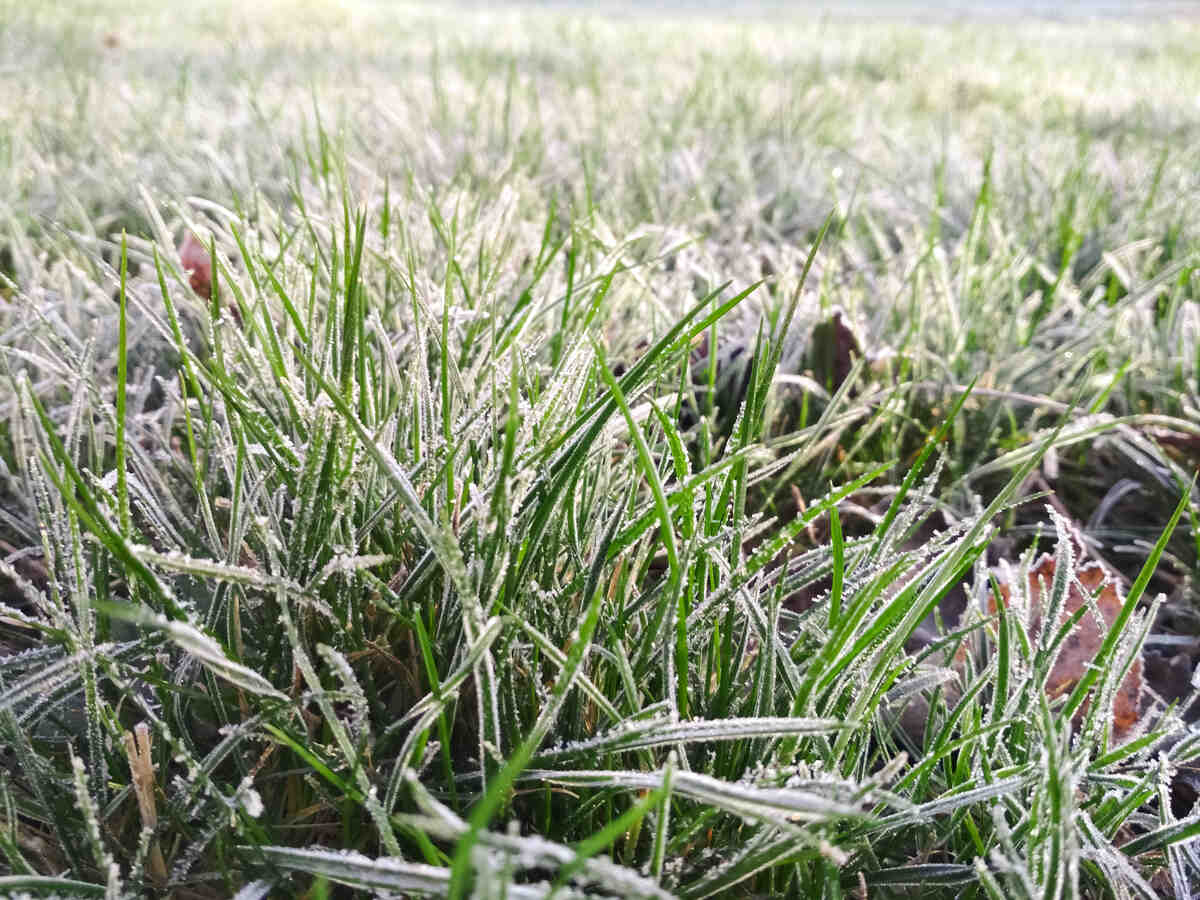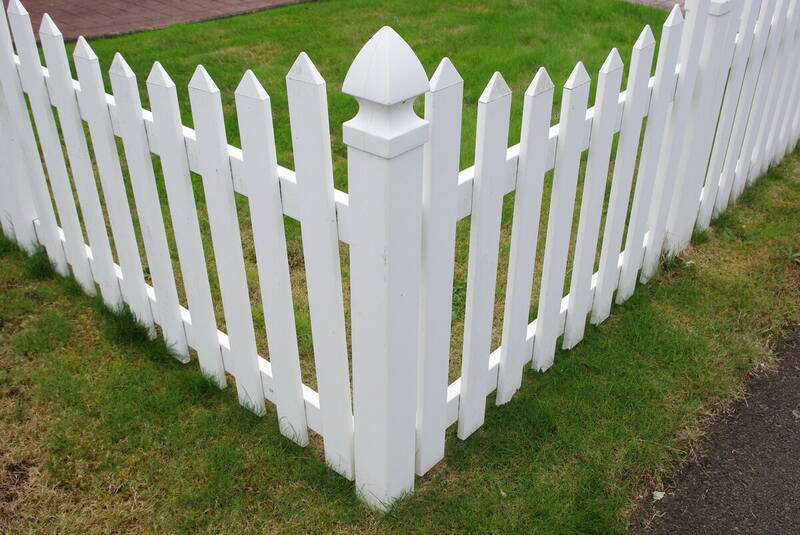
Winter desiccation is a plant injury that happens to turfgrass when it loses more than half its moisture due to dry winds or sunny days with frozen soil.
Desiccation often affects only the leaves, not the crown, and the grass recovers. This piece discusses what causes winter desiccation, how to limit damage, and the repairs you can make to have a thick, spotless lawn come spring.
What Causes Winter Desiccation?
Harsh winds, sunny days, frozen soil, and a lack of snow cover are the leading causes of winter desiccation in turfgrass and evergreen plants.
Desiccation means excessive loss of water – more than 50% of the plant’s regular moisture level. In lawns, desiccation occurs when the grass leaves lose more water than the roots can absorb from the soil over extended periods.
This severe dehydration can happen to your lawn at any time of the year. When it occurs during the cold season, it is known as winter desiccation or winter burn. Along with crown hydration, ice encasement, direct low-temperature kill, and snow mold, it’s a common cause of winter turf damage.
What can cause such extreme dryness? The main culprits are:
- Little to no snow cover: Snow cover works as insulation for turfgrass, keeping moisture in and protecting the plants from the drying effect of wind and sun. Without it, the grass is exposed to dehydration.
- Low moisture. Dry winters, with little snow or rainfall, lead to low soil moisture levels that cannot replace the water lost through the grass leaves.
- Frozen soil. Even when the lawn soil is rich in moisture, as long as the soil is frozen, grass roots can’t access the water.
- Dry, harsh winter winds. Like a hair drier set on cool air, winter winds can draw water from grass leaves, drying them out.
- Intense sunlight: During warm spells, the sun heats the grass leaves and triggers evapotranspiration, increasing water loss.
Be wary of grass desiccation when “air temperatures are more than 20 degrees F above soil temperatures,” say experts at the University of Minnesota.
Lawns on elevated sites or slopes exposed to wind and direct sun are the most vulnerable. So is turfgrass on well-drained, sandy terrains that can’t hold much water.
According to experts at Kansas State University, thick thatch is another aggravating factor of winter desiccation. “Roots become elevated in the thatch and are unable to absorb water from soil.”
Signs of Winter Desiccation

Signs of winter desiccation are mostly visible in the spring once the turfgrass starts to green up. Specific damage that can easily point you toward winter turf desiccation are:
- Dry, brittle, straw-like leaves that look lifeless
- A general appearance of dehydration
Other lawn damage that can indicate this type of winter injury include:
- Thinned turf canopy
- Brown or yellow grass leaves
- Bare patches where the grass doesn’t green up
- Delayed greening and stunted growth on some areas of the lawn
It’s important to differentiate between winter desiccation and snow mold, a fungal disease that requires different treatments.
Can You Repair Winter Desiccation?
In most cases, proper watering and fertilization can repair winter desiccation injury.
Winter desiccation mainly affects the leaves and, only in severe cases, the plant’s crown. The crown is the plant’s growing point where roots and leaves are produced. If the crown is not desiccated, the grass will recover in the spring with regular watering and proper fertilization.
Where winter desiccation has killed the crown (instead of sturdy and whitish, it is now brown or discolored and brittle), you’re dealing with winterkill. The grass is dead and needs replacing.
Note: It’s often difficult to discern dead grass from still-dormant grass in early spring. Learn how from our “Dormant Grass vs. Dead Grass” guide.
The brown spots and bare patches are easy to notice when the grass is tall enough for the first mow of the year (about 3 inches tall). This is the best time for lawn repairs. To fix the damaged sections, mow the grass low, remove the thatch if it’s over 0.5 inches thick, then aerate and overseed or plant new sod.
How to Prevent Winter Desiccation

To prevent winter desiccation, you can either prevent the grass leaves from losing water or provide additional moisture to the roots.
Here are a few cold-weather lawn care methods you can use to prepare the lawn for winter:
- Plant windbreaks and install fences (vinyl fences are a good choice) on the cold and windy side of the lawn (often the north side).
- Apply 1/8 to 1/4 inch of sand topdressing late fall after the last mowing. Heavy sand topdressing is thought to protect the crowns from the wind and limit rapid changes in crown temperature.
- Protect the grass with permeable or impermeable covers, but remember to take them off in late winter to prevent early de-acclimation and yellowing. Covers work better if you previously spread some straw, hay, or wood fibers for better insulation.
- Coat the grass with anti-desiccant spray. Anti-desiccants seal the plant and prevent the leaves from losing water.
- Irrigate lightly during warm days with above-freezing temperatures. To prevent damage to the irrigation system, keep it turned off and use a sprinkler attached to a garden hose instead. According to experts at Nebraska Lincoln University, ¼ to ½ inches of water once every 2 to 3 weeks is required to keep the crown hydrated.
- Plant turfgrass species are more tolerant to dryness, such as tall fescue, which has deeper roots.
Protect the Turf from Winter Damage
If the chill air sends you back to get a warm coat to leave the house, it’s time to prepare the lawn for the cold season. Find a lawn care professional with LawnStarter and ensure your turfgrass is well-protected from extreme weather this winter.
Sources
- Charbonneau, P. (2010). Winterkill. The Wrath that is a Canadian Winter. GreenMaster, January/February 2010, pag. 19 – 23. Retrieved from https://www.gcsaa.org/docs/default-source/winter-resources-2014/winterkill-canadian-wrath.pdf
- Fry, J. (2022, February 2). Winter Desiccation. Kansas State University. https://blogs.k-state.edu/turf/winter-desiccation/
- Reiter, M. (n.d.). Winter Desiccation of Turfgrass. University of Minnesota. https://turf.umn.edu/news/winter-desiccation-turfgrass
- Scott, E. (n.d.). Winter Drought – Prevent “Invisible” Plant Damage. University of Nebraska-Lincoln. https://hles.unl.edu/winter-drought
- Zhang, Q., Bartels, D. (2018, January 29). Molecular responses to dehydration and desiccation in desiccation-tolerant angiosperm plants. Journal of Experimental Botany, Volume 69, Issue 13, Pages 3211–3222, https://doi.org/10.1093/jxb/erx489
Main Image Credit: Sasha / Adobe Stock Free / License